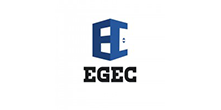المصعد الكهربائي
تاريخ مصاعد يعود إلى آلاف السنين، حيث اخترعت طرق تساعد على رفع الأحمال والأشخاص بواسطة أنظمة بدائية قديمة. ومع مرور الزمن، تطورت التكنولوجيا لتصل إلى ما نعرفه اليوم المصعد الكهربائي الحديث.
تتكون اسانسير كهربائي من مجموعة من المكونات المتطورة والمعقدة تعمل بتناغم لتحقيق رفع وهبوط الأحمال بأمان وكفاءة. وقد شهدت هذه الصناعة تطورات كبيرة على مدى السنوات القليلة الماضية، حيث أدت التحسينات التكنولوجية والابتكارات إلى تطوير مصعد أكثر ذكاءً واستدامةً.
A. تعريف المصعد الكهربائي ووظيفته
الأسانسير الكهربائي هو جهاز نقل رأسي يستخدم لنقل الأشخاص والبضائع بين الطوابق المختلفة في المباني. يتكون الاسناسير الكهربائي من عربة معلقة داخل طوق (شعاع) معدني عمودي يسمى "الرافعة"، ويتم تحريك العربة بواسطة محرك كهربائي يعمل على سحب وإطلاق الكابلات المرتبطة بالعربة.
يتم التحكم في حركة الاسانسير باستخدام أنظمة التحكم المعقدة، وتتضمن مكونات السلامة مثل الفرامل والحساسات وأنظمة الطوارئ لضمان السلامة أثناء التنقل. يعتبر المصعد الكهربائي وسيلة فعالة وموثوقة لنقل الأفراد والحمولات الثقيلة بسهولة بين الطوابق المختلفة في المباني العالية والمنشآت الصناعية والتجارية. (تكلفة تركيب اسانسير)
وظيفة المصعد الكهربائي تتجاوز مجرد توفير وسيلة سهلة للتنقل الرأسي؛ إذ يلعب دورًا حيويًا في زيادة إنتاجية المباني التجارية والمكاتب وتحسين إمكانية الوصول للأشخاص ذوي الاحتياجات الخاصة. كما يساعد في تقليل الزحام وتوفير الوقت، ويُعَدُّ جزءًا أساسيًا من البنية التحتية الحديثة التي تساعد على تسهيل الحياة اليومية والنمو الحضري. (سعر ريموت الأسانسير)
B. أهمية المصاعد في المجتمع الحديث
يلعب المصعد الكهربائي دورًا بارزًا وحيويًا في المجتمع الحديث، ويُعَدُّ جزءًا لا غنى عنه من البنية التحتية الحضرية والمباني الحديثة. إليك بعض الجوانب التي تبرز أهمية المصاعد في المجتمع: (سعر واير الاسانسير)
1. تسهيل التنقل الرأسي: يساهم المصعد الكهربائي في تسهيل نقل الأشخاص والبضائع بين الطوابق المختلفة في المباني. وبفضله، لا يُعَدُّ الصعود والنزول بالسلالم أمرًا متعبًا أو مُحتمًلا، ويوفر المصعد وسيلة مريحة وفعالة للتنقل داخل المباني العالية والهياكل ذات الطوابق العديدة. (شركات الاسانسيرات)
2. زيادة الإنتاجية والكفاءة: في المباني التجارية والمكاتب والفنادق والمنشآت الصناعية، يعتبر المصعد الكهربائي أداة ضرورية لزيادة الإنتاجية وتحسين الكفاءة. إذ يمكن للموظفين والعاملين الوصول إلى طوابقهم بسرعة وسهولة، مما يسهل من تداول المعلومات والتواصل بين الأقسام المختلفة ويسهم في زيادة الإنتاجية. (شركة اسانسيرات)
3. تحسين إمكانية الوصول: يسهم الاسانسير الكهربائي في تحسين إمكانية الوصول للأفراد ذوي الاحتياجات الخاصة وكبار السن وذوي الإعاقة. فهو يوفر لهم وسيلة آمنة ومريحة للتنقل بين الطوابق والمناطق المختلفة داخل المباني، مما يعزز شمولية المجتمع ويعطي الجميع فرصة المشاركة بكل سهولة. (كبائن مصاعد حديثة)
4. تقليل الزحام وتوفير الوقت: في المرافق العامة والمنشآت الضخمة مثل المطارات والمستشفيات ومراكز التسوق، يساهم المصعد الكهربائي في تقليل الزحام والازدحام في المساحات العامة. كما يوفر الوقت الذي يُنفَق عادةً في انتظار الأدوار أو استخدام السلالم، مما يُسَرِّع التنقل ويحسن تجربة الزوار والمرتادين. (متى يتم تغيير واير الاسانسير)
5. الاستخدام الفعال للمساحات: بفضل المصاعد الكهربائية، يمكن للمباني أن تكون أكثر ارتفاعًا وتحتوي على مزيد من الطوابق، مما يسمح باستخدام المساحات العمودية بكفاءة أفضل. وبهذه الطريقة، يمكن للمدن التعامل مع التحديات الحضرية وتحقيق الاستدامة من خلال الاستفادة الأمثل من المساحات المحدودة. (مصاعد منزلية صغيرة)
باختصار، يعد المصعد الكهربائي ابتكارًا حيويًا يُعزز الراحة والكفاءة ويحسن جودة الحياة في المدن الحديثة. إنه جزء أساسي من الحياة اليومية والبنية التحتية المعاصرة، ويسهم في تطوير مجتمعات مستدامة ومرنة. (مصعد منزلي)
يتكون المصعد الكهربائي من مجموعة من المكونات المتطورة والآليات المعقدة التي تعمل بتناغم لتحقيق رفع وهبوط الأحمال بأمان وكفاءة. إليكم نظرة عامة على أهم المكونات والآليات في المصعد الكهربائي: (اسعار المصاعد الصغيرة في مصر)
1. المحرك الكهربائي: يُعَدُّ المحرك الكهربائي أحد العناصر الأساسية في المصعد، حيث يقوم بتحويل الطاقة الكهربائية إلى طاقة ميكانيكية لتحريك العربة. يتم تثبيت المحرك في غرفة الآلات عادة في الجزء العلوي من البناء. (اسعار ماكينات المصاعد الايطالية في مصر)
2. الطوق (شعاع): هو الهيكل المعدني الرأسي الذي يربط العربة بالمحرك الكهربائي. يتم تحريك العربة على طول الطوق بواسطة الكابلات المرتبطة بها. (مصاعد منزليه)
3. الكابلات والأحبال: ترتبط العربة بالطوق والمحرك بواسطة كابلات وأحبال قوية تسمح برفع وهبوط العربة (اسعار مصاعد بانوراما)
V. أنظمة السلامة في المصعد الكهربائي
A. نظام الإيقاف الطارئ والإجلاء
1. مفهوم الإيقاف الطارئ وأهميته في حالات الطوارئ
2. أجهزة الفرملة الطارئة وكيفية عملها لإيقاف المصعد بسرعة وآمان
3. نظام التحكم الآلي الذي يقوم بالإيقاف الطارئ عند اكتشاف خطأ أو خلل
B. أجهزة كشف الحمولة الزائدة والتوازن
1. أهمية مراقبة حمولة المصعد للحفاظ على سلامة التشغيل
2. أجهزة كشف الحمولة الزائدة وكيفية عملها لتفادي تشغيل المصعد بحمولة فوق الحد المسموح
3. أنظمة التوازن الأوتوماتيكية للحفاظ على استقرار المصعد أثناء التحرك
C. نظام الاتصال لحالات الطوارئ
1. أنظمة الاتصال بين الكابينة والمركز التحكم للتواصل في حالات الطوارئ
2. أنظمة الاتصال بين الكابينة والطوابق للتواصل مع المشغلين والمستخدمين في حالات الطوارئ
3. أهمية سرعة وفعالية نظام الاتصال في تقديم المساعدة والاستجابة السريعة لحوادث طارئة
D. آلية الإيقاف عند انقطاع التيار الكهربائي
1. نظام الإيقاف التلقائي عند انقطاع التيار الكهربائي لحماية الركاب
2. دور البطاريات الاحتياطية في تشغيل أنظمة السلامة حتى يتم إجلاء الركاب بشكل آمن
E. أنظمة الاحتواء والسلامة داخل الكابينة
1. تصميم الكابينة واستخدام مواد آمنة للحماية من الإصابات
2. وسائل السلامة داخل الكابينة مثل مقابض الطوارئ وأجهزة الاتصال للمستخدمين
F. مراقبة وصيانة السلامة
1. أهمية الصيانة الدورية لأنظمة السلامة والتحقق من كفاءتها
2. أجهزة مراقبة حالة المصعد والاختبارات الدورية للتحقق من سلامة التشغيل
3. أهمية تدريب الفنيين والعاملين على الصيانة والتشغيل بشكل آمن وفعال
G. المعايير القياسية للسلامة في المصاعد
1. الجهات المشرفة والمؤسسات المعنية بوضع المعايير القياسية
2. التطورات المستمرة في معايير السلامة والالتزام بالمعايير العالمية
H. أمثلة عملية لحوادث السلامة والتدابير المتخذة لتفاديها
1. دراسة بعض الحوادث الشائعة التي وقعت في المصاعد
2. الإجراءات والتحسينات التي تم اتخاذها لتفادي تكرار الحوادث
I. أهمية نشر الوعي حول أنظمة السلامة في المصاعد
1. دور التثقيف والتوعية للمستخدمين حول سلامة استخدام المصاعد
2. أهمية توعية الجمهور حول مخاطر عدم الالتزام بقواعد وإرشادات السلامة في المصاعد
VI. استخدامات المصعد الكهربائي وتطوراته
A. استخدامات المصعد الكهربائي في المباني المختلفة
1. المصاعد في المباني السكنية
2. دور المصاعد في المباني التجارية والمكاتب
3. المصاعد في المباني الطبية والمستشفيات
4. الاستخدامات الخاصة للمصاعد في المباني الصناعية والمرافق الكبيرة
B. التطورات التكنولوجية الحديثة في المصاعد
1. المصاعد الذكية والمتصلة بالإنترنت
- تطبيقات الهاتف المحمول والتحكم عن بعد في المصاعد
- نظام الإنترنت من الأشياء (IoT) للربط والتحكم الذكي
2. تقنيات الأمان والتحسينات في أنظمة الإيقاف والفرملة
- أنظمة الاكتشاف المتطورة للحمولة الزائدة والتوازن
- نظام مراقبة حالة المصعد والتحذير المبكر من الأعطال
3. تحسين كفاءة الطاقة واعتمادية الأداء
- استخدام أنظمة توفير الطاقة والاستدامة البيئية
- تحسين جودة المحركات والأجزاء لتقليل الأعطال والصيانة الدورية
C. المصاعد والتصميم المعماري الحديث
1. تكامل المصاعد في تصميم المباني الحديثة
2. استخدام المصاعد الزجاجية والشفافة في المباني الراقية
3. التحديات المعمارية والهندسية في تصميم وتركيب المصاعد في المباني ذات الارتفاع العالي
D. المصاعد الخاصة والمبتكرة
1. المصاعد للنقل العمودي في الأبراج والمباني الشاهقة
2. المصاعد الأفقية والدوارة لتسهيل الوصول بين الطوابق والأقسام المختلفة
3. المصاعد الصغيرة والمصاعد المنزلية للأفراد ذوي الاحتياجات الخاصة



















